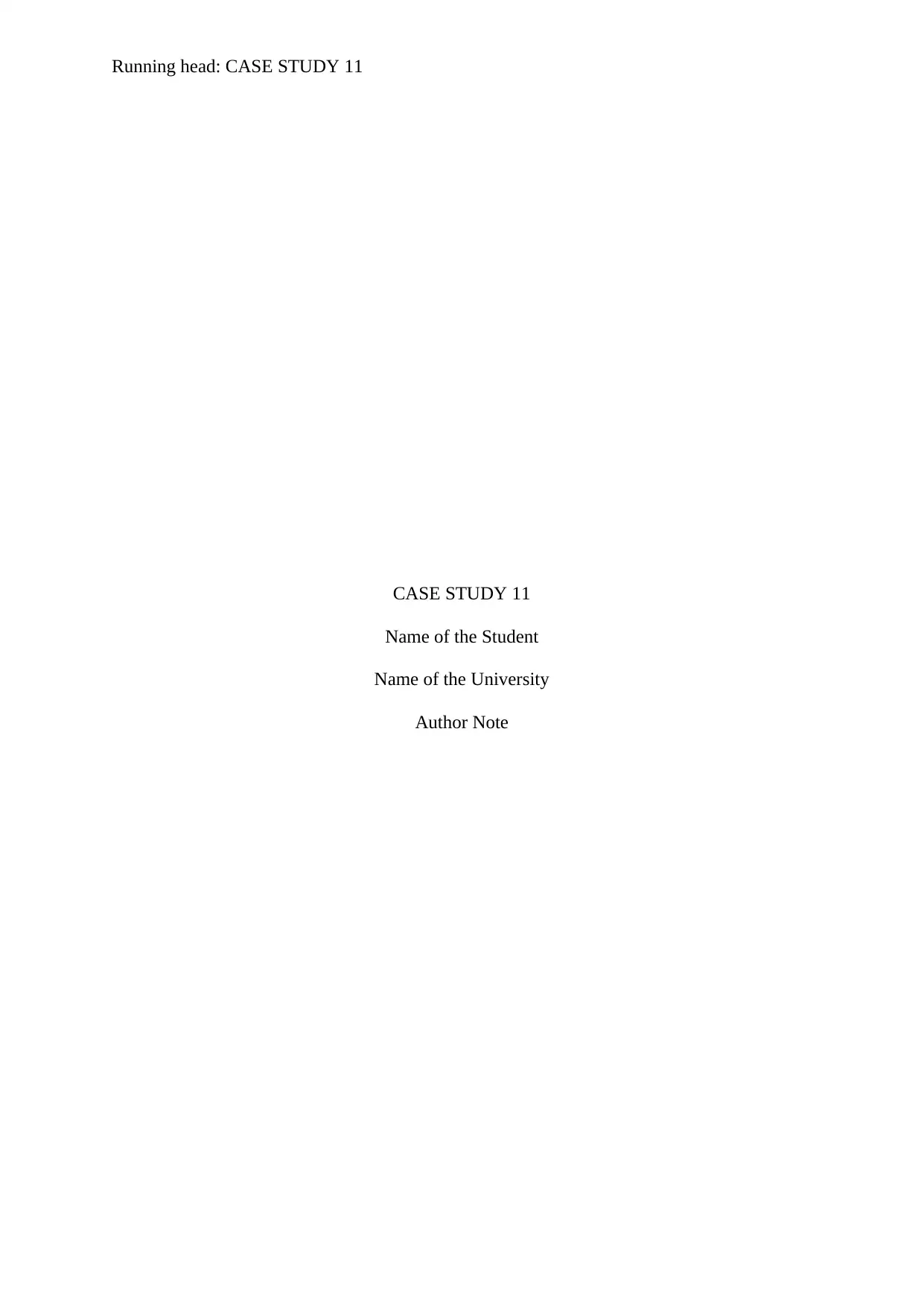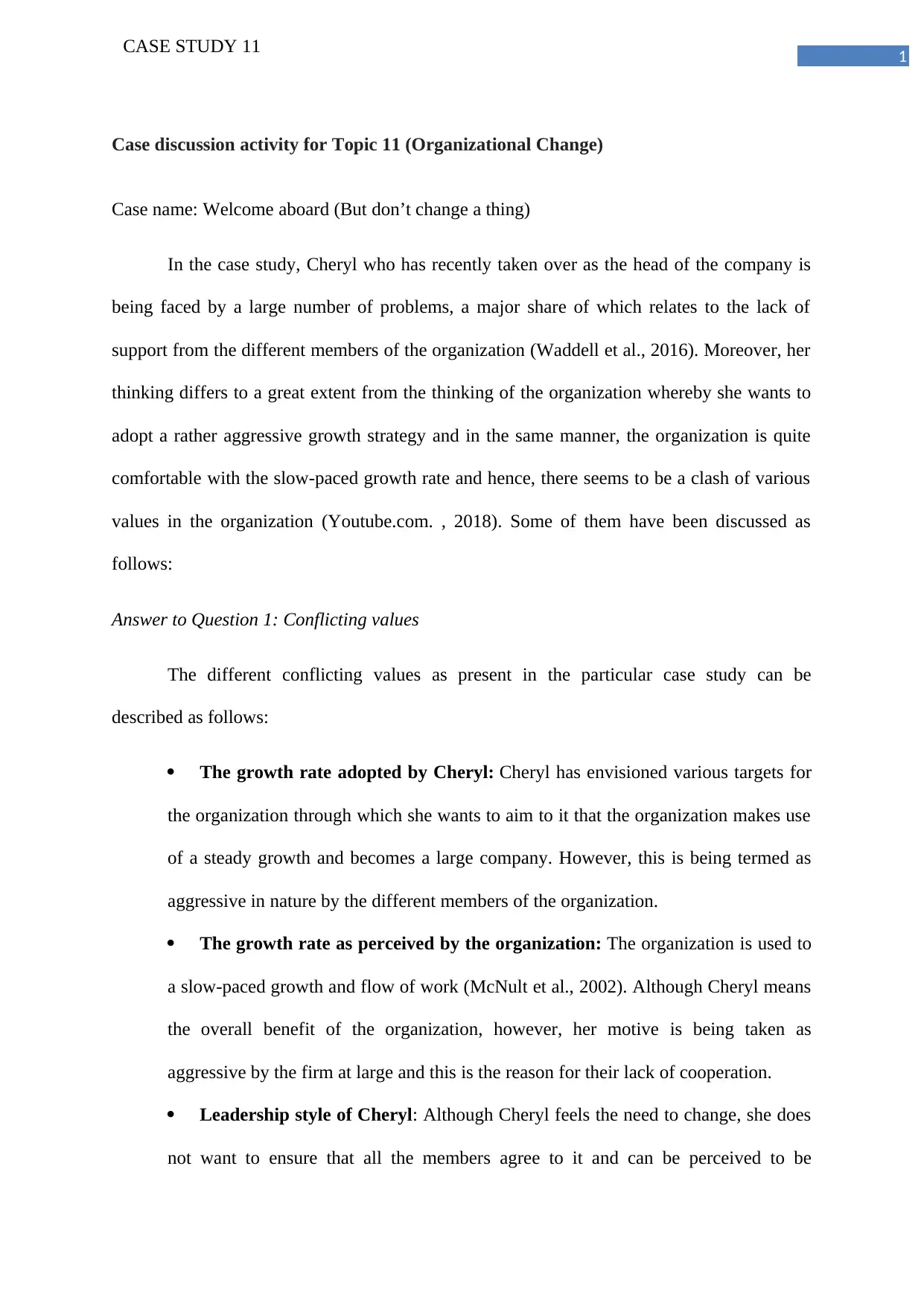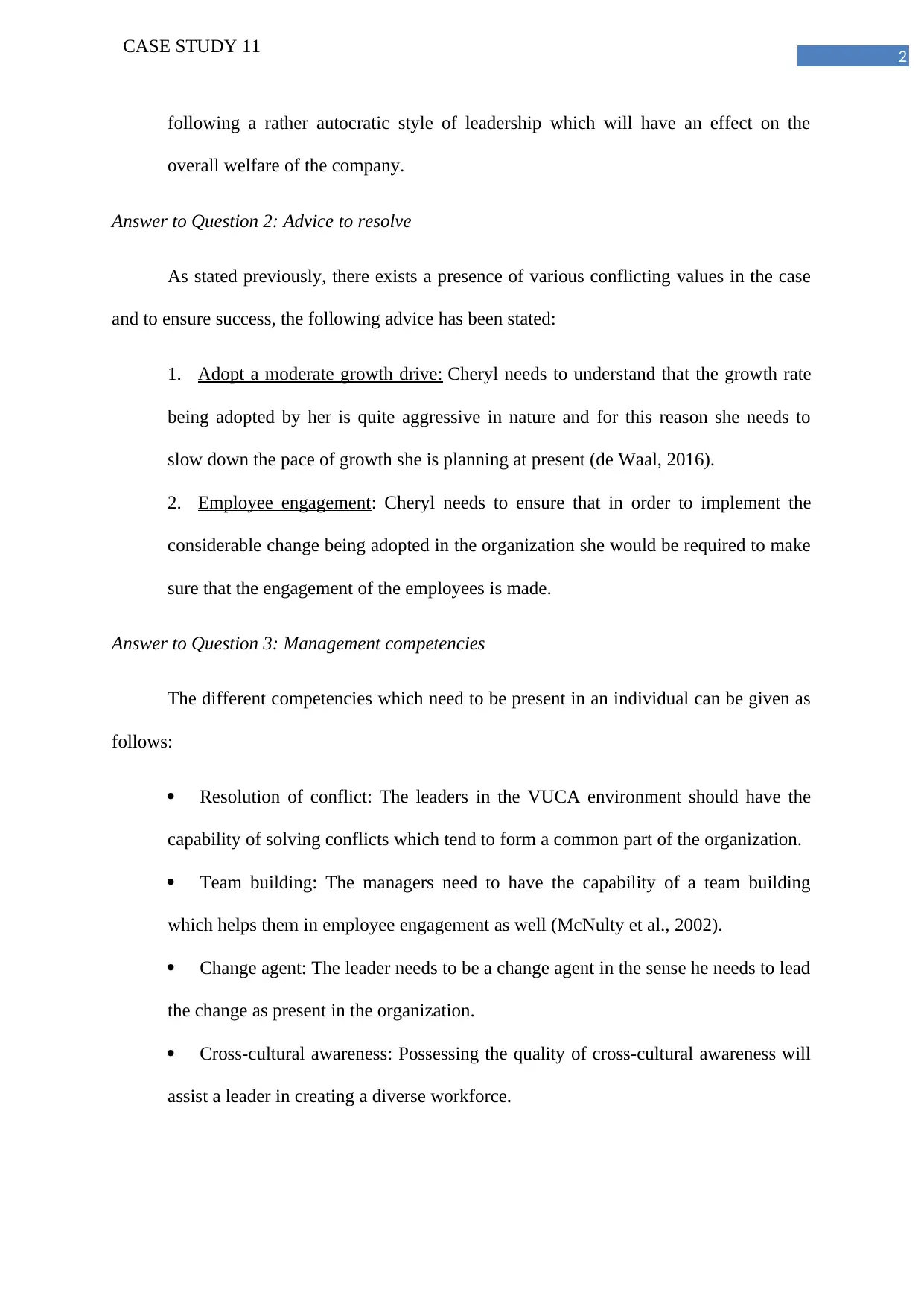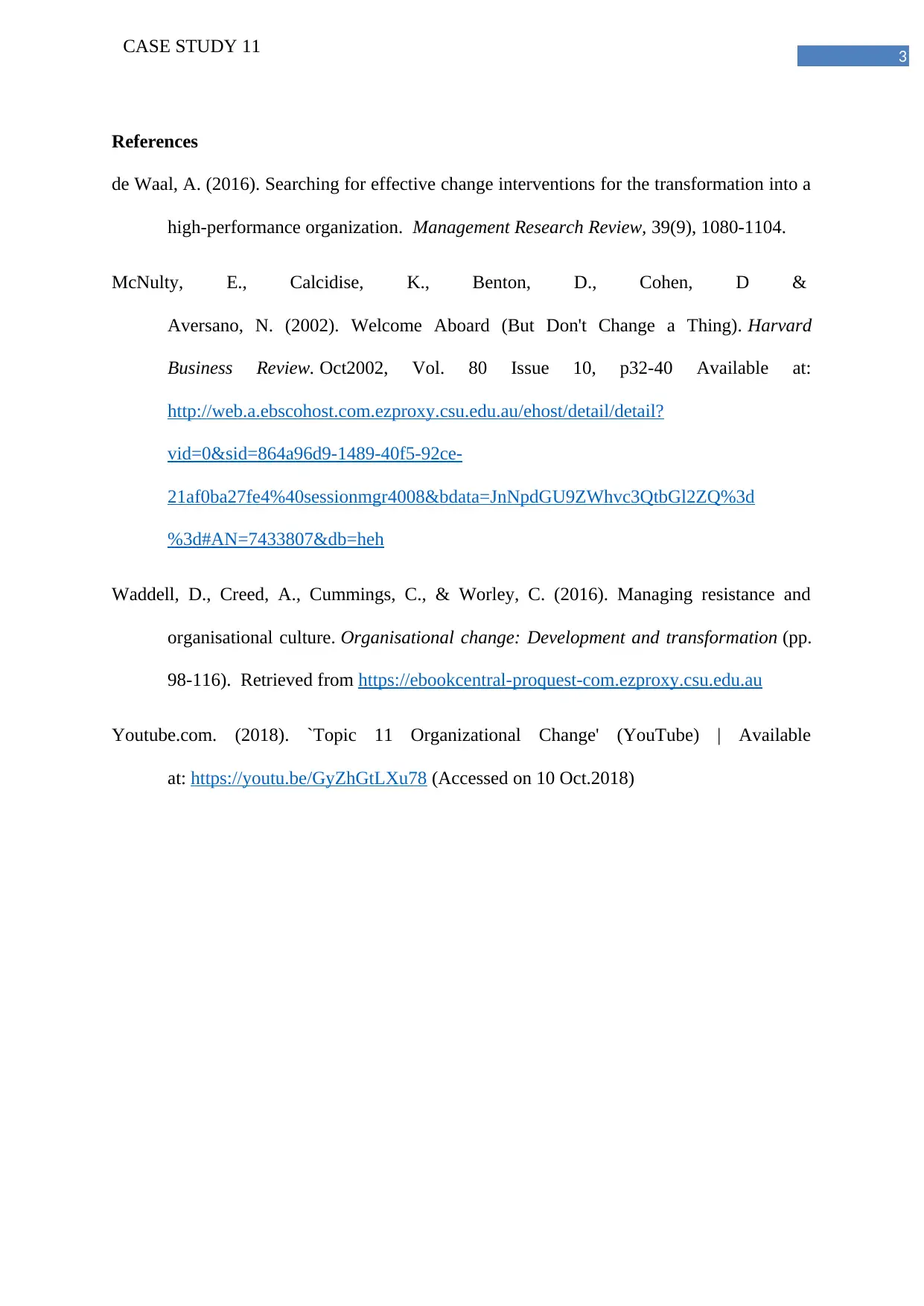Case Study 11: Leadership in a VUCA Environment and Change Management
VerifiedAdded on 2023/06/03
|4
|807
|127
Case Study
AI Summary
This case study examines the challenges faced by Cheryl, a newly appointed CEO, in implementing organizational change within a company. The analysis identifies conflicting values between Cheryl's vision for aggressive growth and the organization's preference for a slower pace. It explores issues such as Cheryl's leadership style and the lack of employee engagement. The study provides advice to resolve these conflicts, suggesting a moderate growth strategy and emphasizing the importance of employee engagement. It highlights key management competencies essential for 21st-century leaders in a VUCA environment, including conflict resolution, team building, change management, and cross-cultural awareness. The case study references relevant academic sources to support its findings and recommendations.
1 out of 4











![[object Object]](/_next/static/media/star-bottom.7253800d.svg)